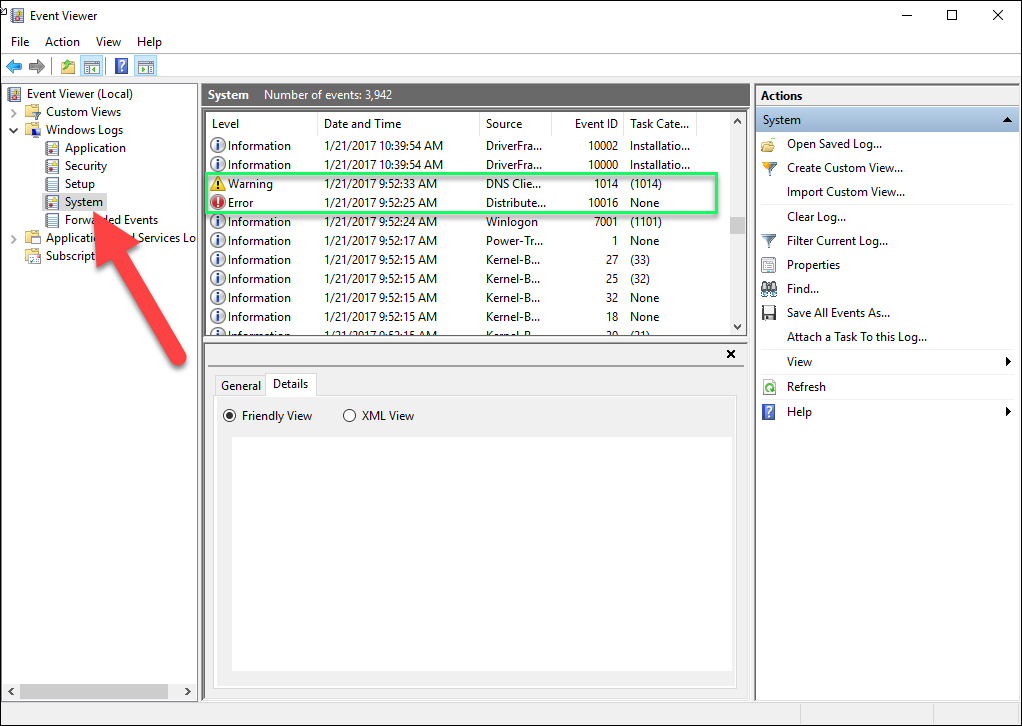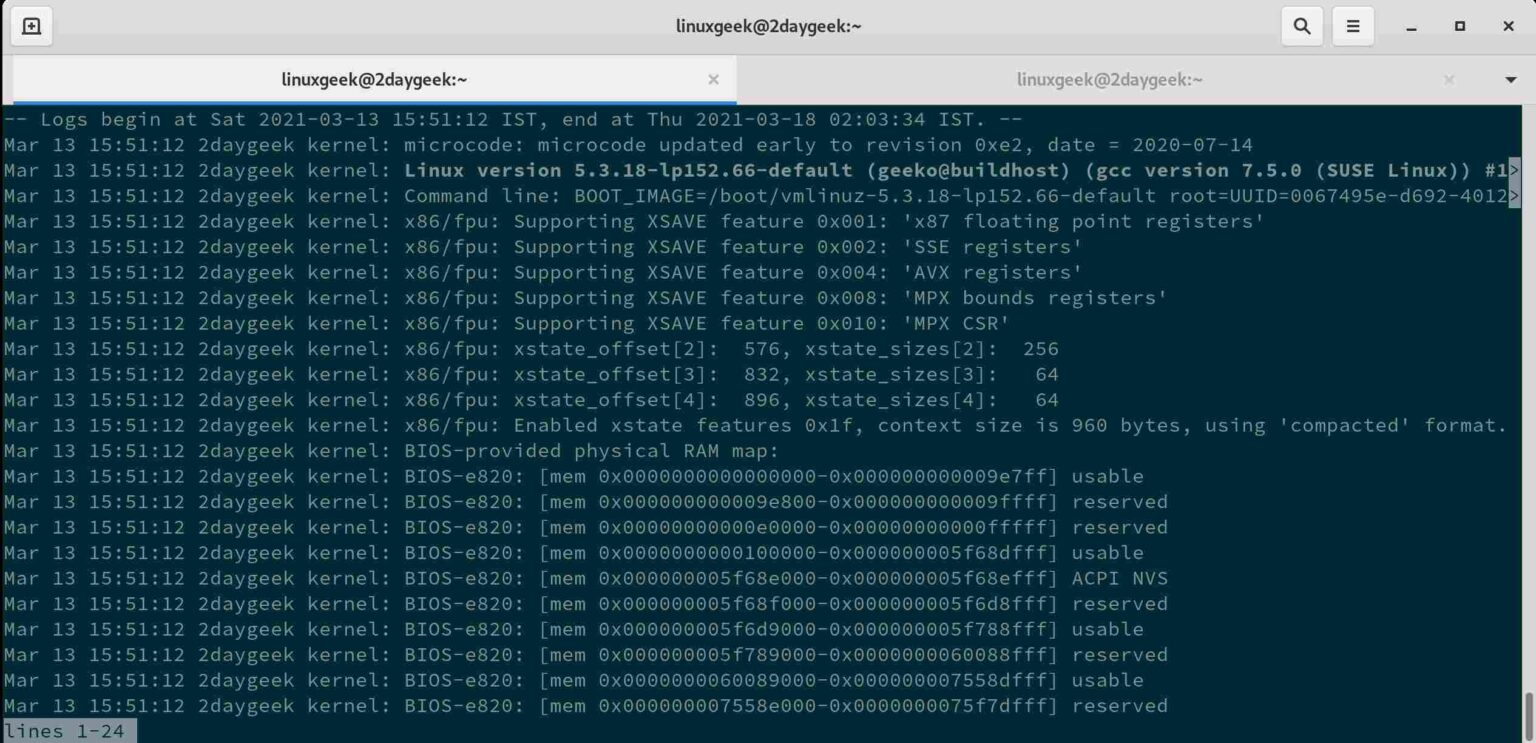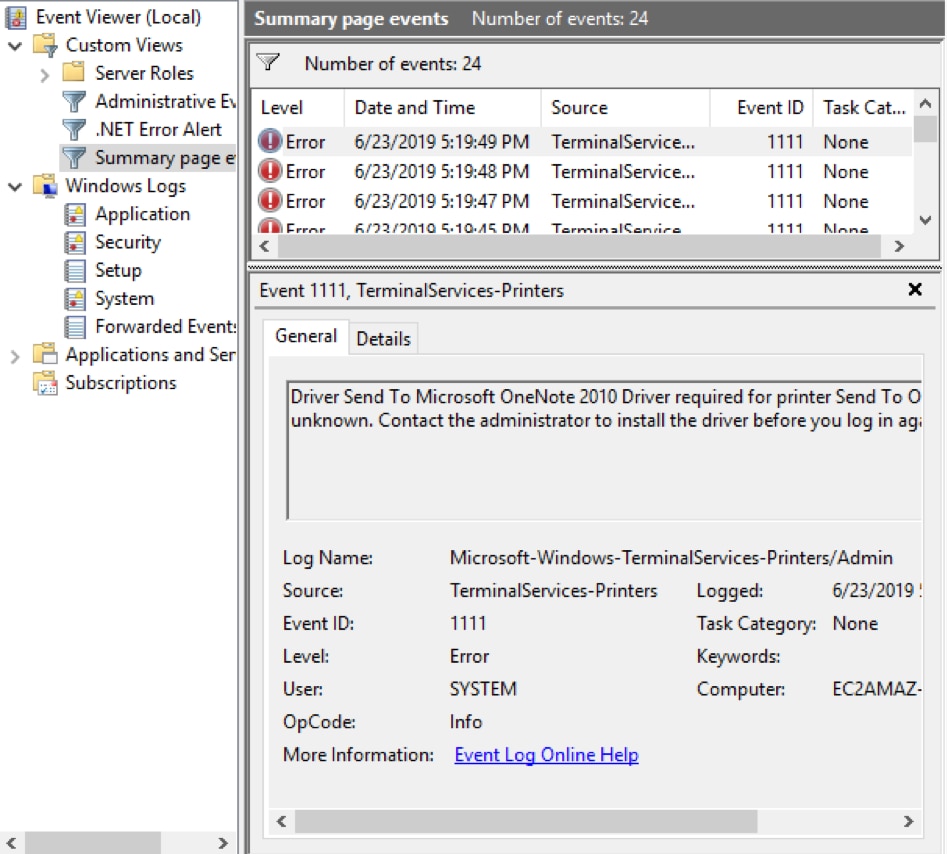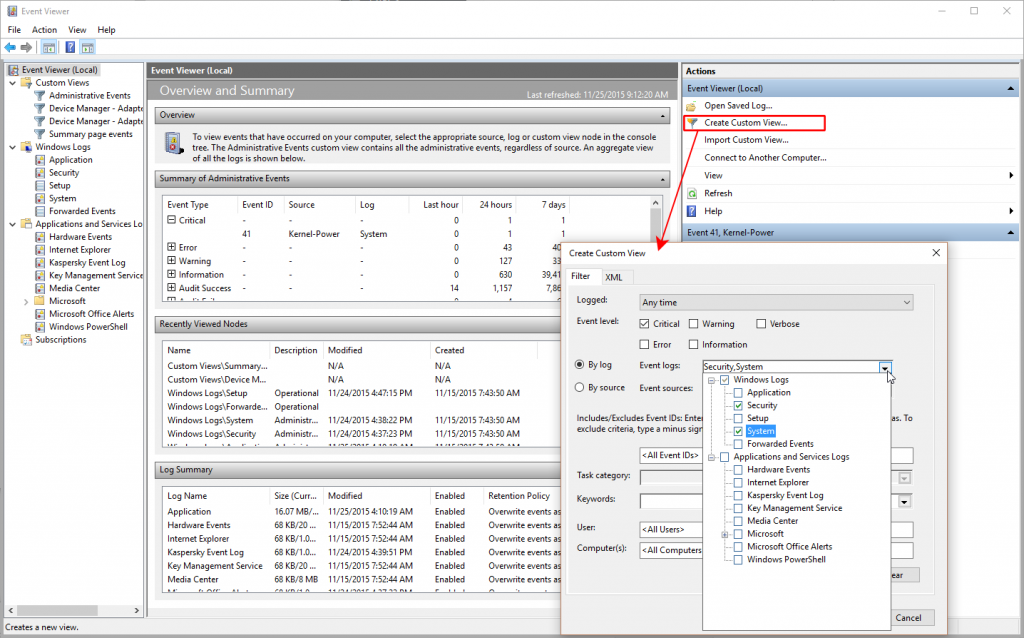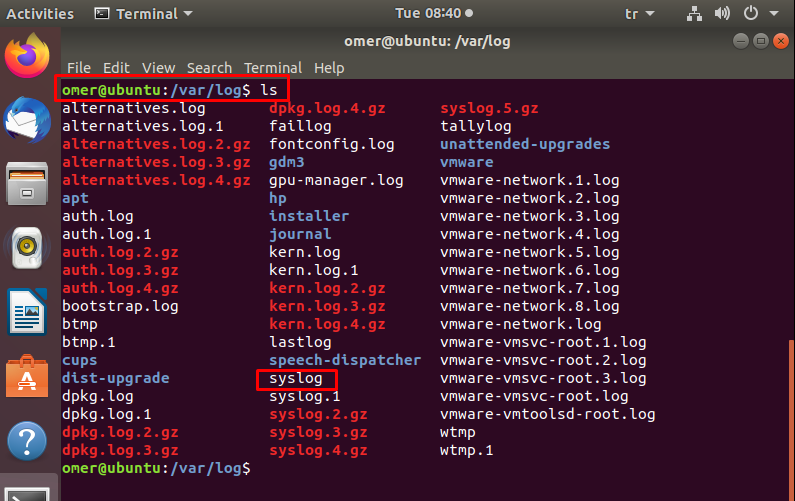Fun Tips About How To Check System Logs In Linux
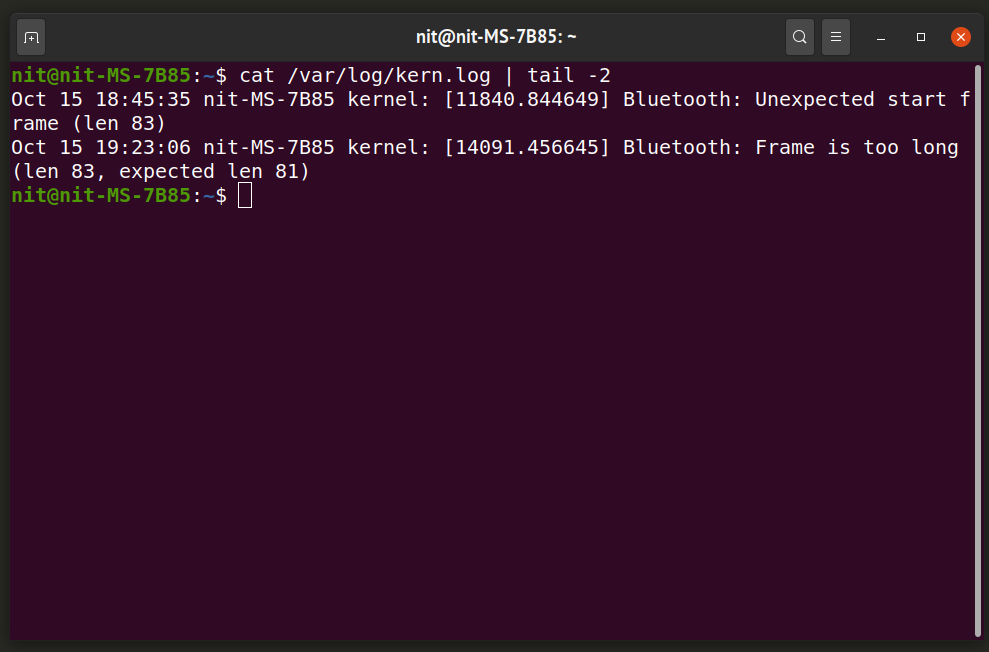
If the file doesn't exist, check /etc/syslog.conf to see.
How to check system logs in linux. Step 1 — finding linux system logs. How can i check linux logs? Want to access your system logs on linux?
Log files in linux systems serve as chronological records of events, errors, and activities. This takes you to /var/log, the location of your linux. All ubuntu system logs are stored in the /var/log directory.
What is journalctl? Enable ssh in dcui ( troubleshooting options >. According to the website, it is a gui combination of the less and grepcommands.
Using journalctl to view log. While debugging or solving an issue with one of our services, typically the first place we want to look at is the logs of our system and services. To reach the core of an issue, or to see if your application or system is behaving in the desired manner, you can view the system log files either graphically or.
Log files can be very useful when trying to troubleshoot a problem with the system such as trying to load a kernel driver or when looking for unauthorized login attempts to the. Press ctrl + alt + t. For ubuntu (and derivatives), linux mint and other distributions that use apt.
This opens the shell prompt. The log file viewer displays a number of logs by. Just use the journalctl command, as in:
If you need to use a gui program, you can use the glogg. Fast & responsive client: Users can customize the display.
By default it's logged into system log at /var/log/syslog, so it can be read by: To query all messages related to a particular user, find the user's id (uid) and use that to perform the query. How to check system logs on linux.
These files play a crucial role in linux systems by recording system. You can install it using the command line. Linux log files and usage.
Change into this directory in the terminal using the command. For example, to check all logs related to the sadmin. The default location for log files in linux is /var/log.
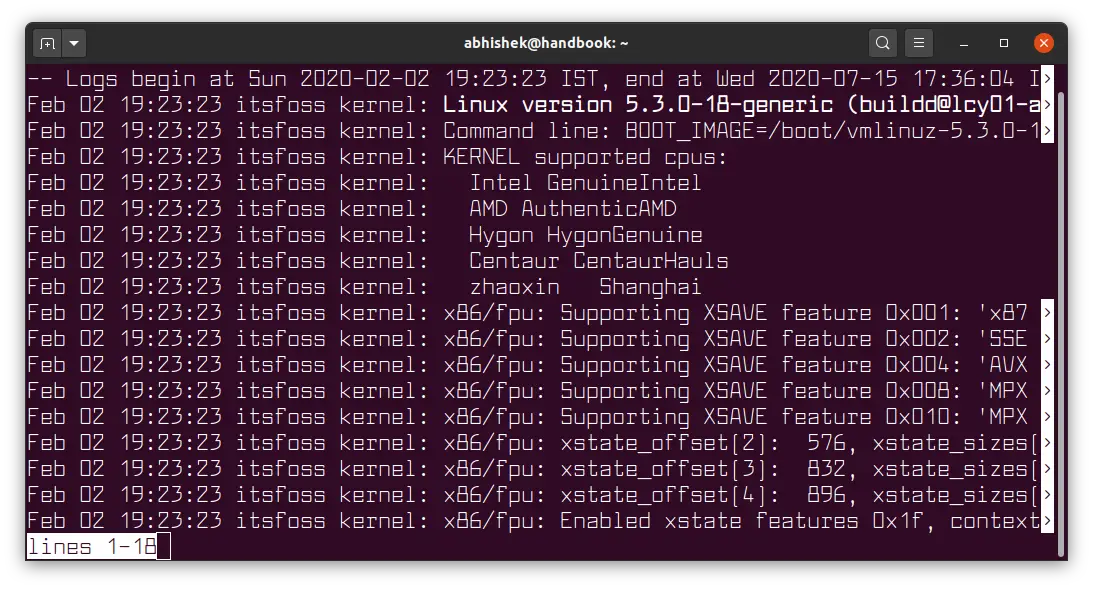

![How to check application logs in Windows 10 [Event Viewer] Unlimited](https://i.ytimg.com/vi/TMpLx3SXuNk/maxresdefault.jpg)
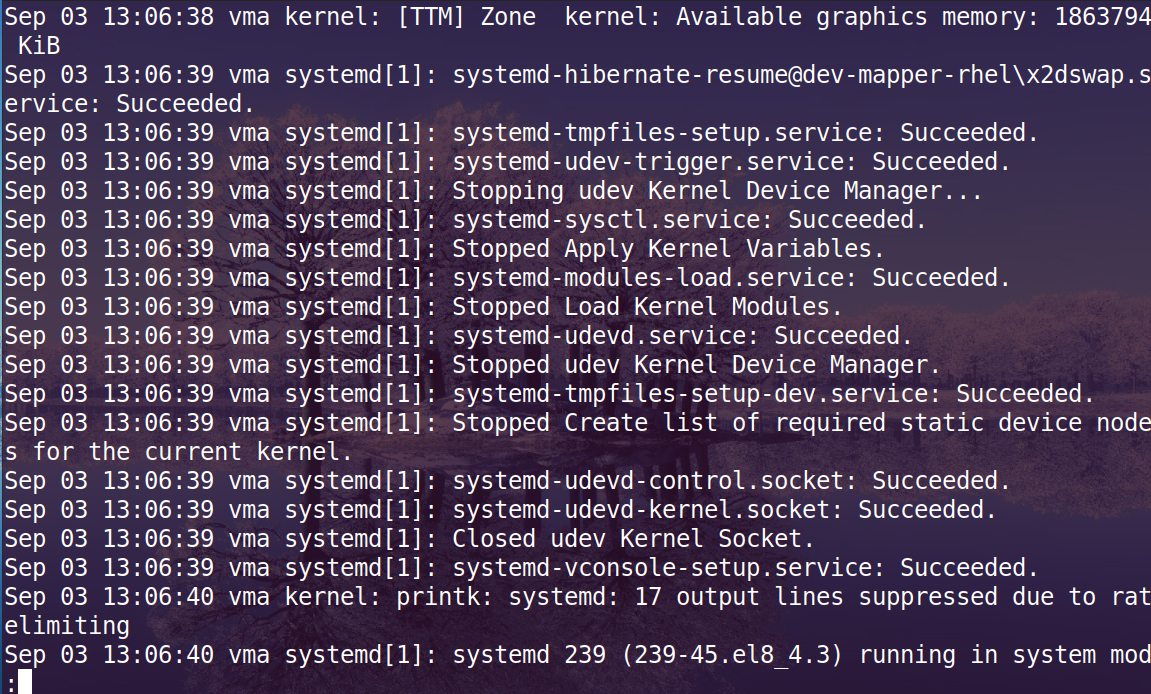



![What Are Linux Logs & How to View Them [Logging Guide] Sematext](https://sematext.com/wp-content/uploads/2020/06/linux-logging-post-2.png)
